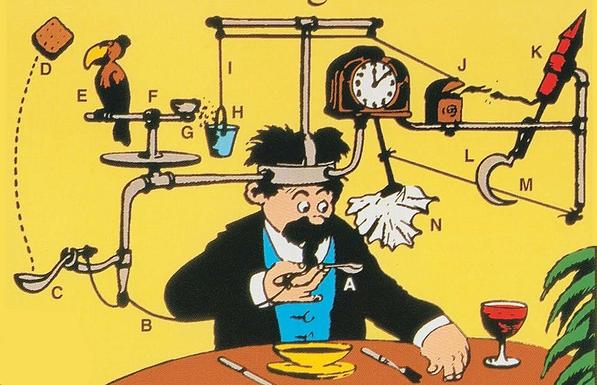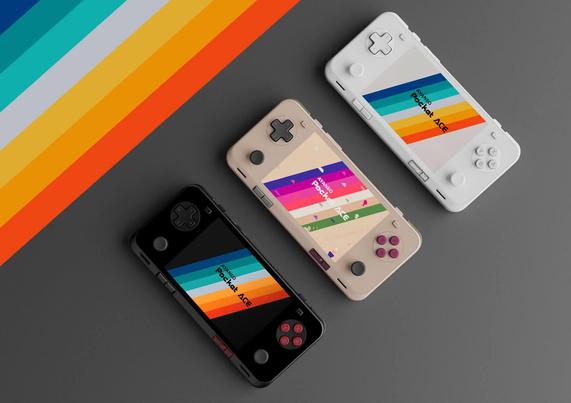The AYANEO Pocket Ace Will Pack a Lot of Power in a Small Package https://theinspirationgrid.com/editorial/the-ayaneo-pocket-ace-will-pack-a-lot-of-power-in-a-small-package/ #gaming #HandheldGaming #VideoGames #ProductDesign #product #DesignInspiration #DesignInspo #inspiration #InspirationGrid
Recent searches
Search options
#productdesign
#Design #Launches
Symbl · A collection of symbols for designers and developers https://ilo.im/162va3
_____
#Symbols #Figma #ProductDesign #UiDesign #VisualDesign #WebDesign #Development #WebDev #Frontend #HTML
#Design #Examples
From real to digital · How UI components are inspired by real-world objects https://ilo.im/162y07
_____
#UI #Components #Interactivity #DesignSystem #ProductDesign #UxDesign #UiDesign #WebDesign #Inspiration
#Design #Analyses
The fallacy of optical alignment · “You don’t have to nudge, you can measure instead.” https://ilo.im/1630q4
_____
#Alignment #Measurement #PixelPushing #VisualDesign #ProductDesign #UiDesign #WebDesign
#Design #Cheatsheets
A visual overview of 70+ UX metrics · The many ways to measure user experience https://ilo.im/162znj
_____
#InfoGraphic #Taxonomy #UX #Metrics #ProductDesign #UxDesign #UiDesign #WebDesign #Collection
#Design #Guides
Making the move to UI3 · Figma’s transition to a redesigned user interface https://ilo.im/162zdy
_____
#Figma #UI #DesignTool #ProductDesign #UxDesign #UiDesign #WebDesign #Development #WebDev #Frontend
#Design #Announcements
Making the move to UI3 · Figma’s transition to a redesigned user interface https://ilo.im/162zdy
_____
#Figma #Redesign #UI #AI #DesignTool #ProductDesign #UxDesign #UiDesign #WebDesign
#Design #Approaches
Design handoff is broken · Beyond the limitations of traditional design handoff https://ilo.im/162we4
_____
#Handoff #Communication #Collaboration #Figma #ProductDesign #UiDesign #WebDesign #Development #WebDev #Frontend
I'm looking for a new design role!
My work friends (I’d like to believe) would say I’m helpful and smart. That I care about the people using what I design. Plus, I’m good at troubleshooting tricky group dynamics. To summarize: I’m fun to work with!
If you know anyone looking for a senior/staff/principle product designer, tell them to check out my BRAND NEW website and send me a message.
Thanks a million
#getfedihired #productdesign #interactiondesign #userresearch
#Design #Debates
AI is the future of accessibility · “Let’s treat AI not as a threat, but as a tool we must shape.” https://ilo.im/162y0q
_____
#AI #Accessibility #ProductDesign #UxDesign #UiDesign #WebDesign #Development #WebDev #Frontend
#Design #Challenges
Simplification takes courage · “Simplicity isn’t the absence of complexity, but rather complexity resolved.” https://ilo.im/162y5c
_____
#Decisions #Clarity #Simplicity #Complexity #ProductDesign #UxDesign #UiDesign #WebDesign
'Buoy' a Concrete & Stainless Steel table lamp.
Dimensions and weight:
Width: 11 cm / 4 ½ Inches
Depth: 9.5 cm / 3 ¾ Inches
Height: 33 cm / 13 Inches
Weight: +/- 1.2 Kg / 2.6 lbs
Already sold but still have these beautiful images of it.
For available work visit ThuhShop 
#Design #Guides
Hyper-personalization · A practical guide to scalable individualized UX design https://ilo.im/162mz7
_____
#Personalization #Engagement #Conversion #UserBehavior #Data #AI #ProductDesign #UxDesign #WebDesign
#Design #Cheatsheets
“Can you simplify this?” · Ways to streamline too much information https://ilo.im/162vac
______
#Simplification #Information #Copy #Form #Content #ProductDesign #UxDesign #UiDesign #VisualDesign #WebDesign
#Design #Announcements
Penpot’s pricing · The present and future pricing of the Figma alternative https://ilo.im/162v3i
_____
#Penpot #DesignTool #Design #ProductDesign #UxDesign #UiDesign #WebDesign #Development #WebDev #Frontend
STEEL CONCRETE
LIGHT
'BurSong'
The steel shade is cut from an up-cycled galvanized steel roof panel of which the surfaces have been hand sanded in multiple stages resulting in a brushed like finish.
Dimensions and weight:
Width: 38.5 cm / 15 ¼ Inches
Depth: 14.5 cm / 5 ¾ Inches
Height: 8.5 cm / 3 ¼ Inches
Weight: +/- 1.4 Kg / 3 lbs
#lamp #productdesign #light
#lightingdesign #lighting
#architecture #design #concrete #handmade #cyberpunk #industrialdesign #art
#Design #Debates
Figma’s not a design tool · “It’s a Rube Goldberg machine for avoiding code.” https://ilo.im/162u8p
_____
#Figma #NoCode #DesignTool #ProductDesign #UxDesign #UiDesign #WebDesign #Development #WebDev #Frontend

#Design #Explainers
F-shaped reading · Often applies to content pages on the web https://ilo.im/162ort
_____
#EyeTracking #Reading #Skimming #Content #Layout #Website #ProductDesign #UiDesign #WebDesign
#Design #Collections
somepx · An excellent set of handcrafted pixel fonts https://ilo.im/1623ys
_____
#Font #Typeface #Typography #IndieWeb #ProductDesign #UiDesign #WebDesign #Development #WebDev #Frontend
#Design #Challenges
Our interfaces have lost their senses · Let’s put the you back in UI! https://ilo.im/162t5g
_____
#UI #Evolution #Sensations #Human #Machine #Device #ProductDesign #UxDesign #UiDesign #WebDesign





